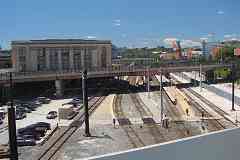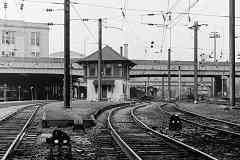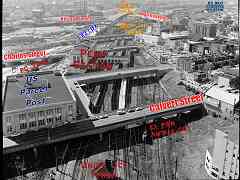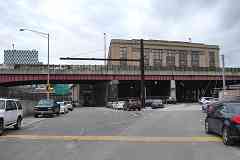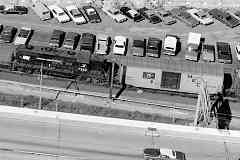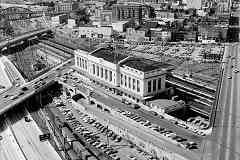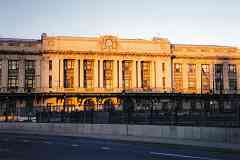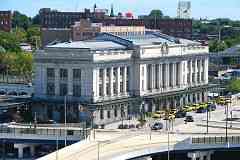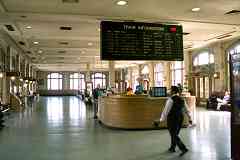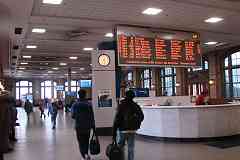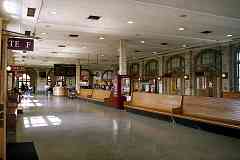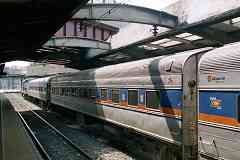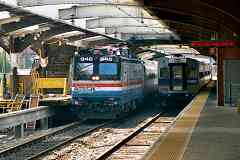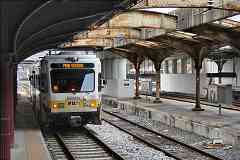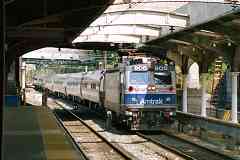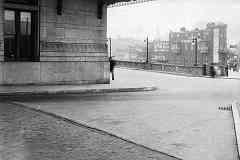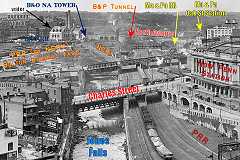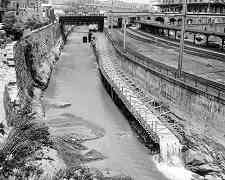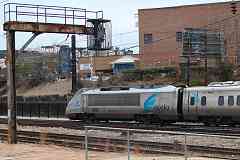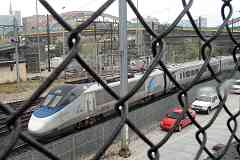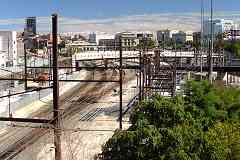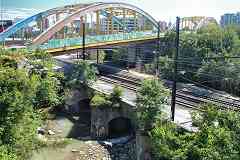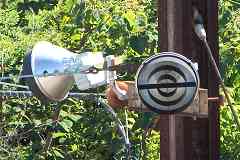|
Long before Amtrak, as horse-drawn carriages were giving way to automobiles, the
B&P, PW&B, Northern Central, B&O, Western Maryland, and Maryland and Pennsylvania
all had trains 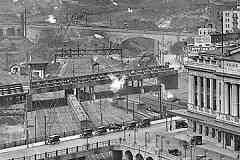 rolling in this vicinity. A series of smaller stations gave way in 1911 to the
Union Station seen here.
rolling in this vicinity. A series of smaller stations gave way in 1911 to the
Union Station seen here.
The "Now Penn Station" label on the main photo marks what is considered the front of
the building. During 1917, most trains pulled out from behind the station under the
power of steam, as seen near center of the zoom view at right. Trains then followed
a Z-shaped route into B&P Tunnel near the top left.
Links:
source DPC photo,
similar 1952?,
JFX under construction 1958
|
